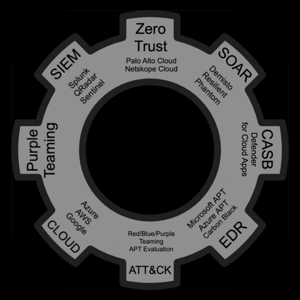Hi there,
Here are some low level consideration for your stream analytics architecture:
Low Level Design: Azure Stream Analytics to SQL Integration
1. Data Source & Input Configuration
- Input Type: JSON data from Azure Stream Analytics
- Serialization Format: JSON (configure compression if needed)
- Partition Key: Identify a field in your JSON for partition optimization
- Timestamp Policy: Choose between arrival time or event time (application timestamp)
- Backfill Option: Configure if historical data processing is needed
- Input Validation: Enable to verify schema compliance and improve resiliency
2. JSON Schema Definition
- Schema Inference: Decide between automatic or explicit schema definition
- CREATE TABLE: Define explicit schema for reliable processing using ASA's CREATE TABLE
- Data Types: Map JSON types to appropriate SQL types (string → nvarchar, numeric → decimal/int)
- Complex Types: Handle nested objects and arrays with proper extraction functions
- Default Values: Set default values for missing fields if needed
3. Stream Analytics Query Design
- Query Optimization: Structure query for efficient processing
- Temporal Windows: Define tumbling/sliding/hopping windows if aggregation is needed
- Functions: Implement UDFs for complex transformations if required
- Error Handling: Use TRY_CAST functions to prevent job failures
- Partition Hints: Leverage PARTITION BY for parallelism
- Reference Data: Include reference data joins if required for enrichment
4. SQL Database Output Configuration
- Table Design:
- Primary Key constraints
- Clustered/Non-clustered indexes on frequently queried columns
- Appropriate column data types matching ASA output
- Partitioning scheme if high volume
- Compression settings for large tables
- Batch Settings:
- Max batch count (recommended: 10,000 for optimal performance)
- Batch size (recommended: 1-2 MB)
- Authentication: Use Managed Identity for secure connection
- Retry Policy: Configure appropriate retry settings
- Column Mapping: Define explicit column mapping if field names differ
5. Performance Optimization
- Streaming Units (SUs): Allocate appropriate SUs (start with at least 6 SUs for production)
- Partitioning Strategy:
- Enable "Inherit Partitioning" option for parallelism
- Ensure balanced partitioning to avoid hotspots
- SQL Database Tier: Select appropriate service tier (Premium/Business Critical for high throughput)
- SQL Indexing Strategy: Implement proper indices on frequently queried columns
- Compatibility Level: Use latest ASA compatibility level for best performance
- Watermark Delay: Monitor and optimize to maintain processing speed
6. Monitoring & Alerting
- Key Metrics to Monitor:
- Watermark delay (target <10 seconds for real-time processing)
- SU utilization (target <80%)
- Input/Output events rate
- Runtime errors
- Failed function calls
- Resource utilization
- Alert Thresholds:
- Watermark delay > 1 minute
- SU utilization > 80% for 15+ minutes
- Runtime errors > 0
- Input events with deserialization errors
- Logging Configuration:
- Enable diagnostic logs
- Set up Log Analytics workspace
- Configure proper retention period
7. Error Handling & Data Quality
- Input Data Validation: Implement schema validation at input
- Dead-letter Path: Configure for invalid/unprocessable events
- Error Handling Strategy:
- DROP errors: Discard invalid records
- RETRY: For transient failures
- Exception path for detailed troubleshooting
- Data Quality Checks:
- Implement checksum validation if applicable
- Set up data quality monitoring dashboards
8. Security & Compliance
- Data Encryption: Enable encryption at rest and in transit
- Secure Authentication:
- Use Azure Active Directory (AAD) and Managed Identity
- Avoid shared credentials/connection strings
- Network Security:
- Implement Private Endpoints or Service Endpoints
- Configure firewall rules appropriately
- Auditing: Enable SQL auditing for compliance requirements
- Access Control: Implement proper RBAC for both ASA and SQL
9. Disaster Recovery & Business Continuity
- Geo-replication: Set up SQL geo-replication if needed
- Backup Strategy: Configure SQL automated backups
- Job Recovery Plan: Document steps for job recovery
- Configuration Versioning: Store job definitions in source control
- Failover Testing: Regularly test failover scenarios
10. Deployment & DevOps
- CI/CD Pipeline: Implement automated deployment
- Environment Promotion: Dev → Test → Prod strategy
- ARM Templates/Bicep: Infrastructure as code for reproducibility
- Feature Flags: For controlled rollout of changes
- Blue-Green Deployment: For zero-downtime updates
11. Cost Optimization
- Right-sizing: Adjust SUs based on actual load patterns
- SQL Resource Optimization: Implement elastic pools if applicable
- Data Lifecycle Management: Configure data retention/archiving
- Scheduled Scaling: Implement scheduled scaling for predictable workloads
- Cost Monitoring: Set up cost alerts and regular reviews
12. Documentation & Governance
- Data Dictionary: Document all fields and their mappings
- SLA Definitions: Define performance and availability SLAs
- Runbook: Create operational procedures for common issues
- Change Management: Establish change control processes
- Knowledge Transfer: Ensure team training on the solution
References:
https://learn.microsoft.com/en-us/azure/stream-analytics/
https://learn.microsoft.com/en-us/stream-analytics-query/stream-analytics-query-language-reference
